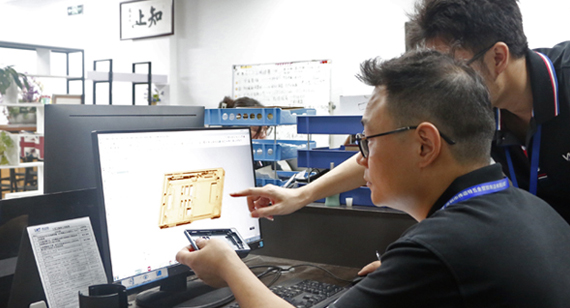15 years one-stop China custom CNC machining parts factory

Hey there I’m VMT Sam!
With 25 years of CNC machining experience we are committed to helping clients overcome 10000 complex part-processing challenges all to contribute to a better life through intelligent manufacturing. Contact us now
 128 |
Published by VMT at Oct 01 2023
128 |
Published by VMT at Oct 01 2023
For parts manufactured using CNC machining, it's crucial to consider the characteristics of CNC processes during the design phase. This ensures that while maintaining machining efficiency and quality, you also aim to minimize the machining costs. Here are some universally applicable design optimization strategies:

1.Reduce Precision Tolerance Requirements for Parts
Higher precision requirements for parts lead to increased demands on equipment and process coordination, resulting in exponentially rising machining costs.
DFM Optimization Suggestions:
√ For assembly parts, reduce tolerance requirements through surplus design and simplified assembly relationships.
√ Replace flat-to-flat fits with point-line or point-plane alternatives to meet lower tolerance designs.
√ Avoid high tolerance notations for parts with low precision and surface requirements.
√ If no machining surface is required, do not design it as a machining surface.
2.Wall Thickness of Parts
Using CNC machining to create metal parts with wall thicknesses less than 0.5mm or plastic parts with wall thicknesses less than 1.0mm often requires custom fixtures or the use of more precise equipment like CNC milling-turning centers, significantly increasing labor and replacement costs.
DFM Optimization Suggestions:
√ For metal parts, maintain a wall thickness greater than 0.5mm.
√ For plastic parts, maintain a wall thickness greater than 1.0mm.
√ Increase wall thickness whenever possible, and avoid designing holes in thin walls unless necessary.
3.Reduce the Machined Area of Parts
When parts require high flatness (parallelism) across the entire surface, consider optimizing the design by reducing the machined area, achieving cost reduction goals.
DFM Optimization Suggestions:
√ Original design: Requires facing the entire bottom surface of the part.
√ Optimized design: Requires facing only the four protrusions, effectively reducing machining area by 75%.
4.Replace External Edges of Parts with C-Chamfers Instead of R-Rounds
If parts have rounded external edges, they may require secondary operations with chamfering tools (increasing labor costs) and longer unit toolpath times compared to chamfers.
5.Provide Rounding Surpluses at Internal Corners of Parts
For parts with recessed structures, it's advisable to provide rounded surplus allowances at internal corners, with a radius matching the milling tool directly.
In the original design (before optimization), the absence of rounding surplus allowances necessitated expensive EDM machining instead of a one-pass milling operation.
6.Keep the Depth-to-Width Ratio Below 3:1
Avoid excessively deep milled areas. When designing parts, maintain a depth-to-width ratio of less than 3:1 to prevent potential tool breakage due to extended cutting length, which could result in hidden costs.
These design optimization strategies, rooted in the principles of Design for Manufacturability (DFM), can significantly reduce CNC machining costs while maintaining product quality and production efficiency.
All in all, optimizing the design of CNC machined parts is critical to achieving cost-effectiveness without compromising quality. By considering factors such as accuracy tolerance requirements, wall thickness, machined area, edge features, corner fillets and aspect ratios. CNC machining manufacturers can reduce machining costs while still meeting required specifications. Design for Manufacturability (DFM) principles play a key role in achieving these cost-saving benefits in CNC machining projects.
Ready To Start Your Next Project?
Get Instant Quote

Request a Free Quote
Send us a message if you have any questions or request a quote. We will get back to you ASAP!